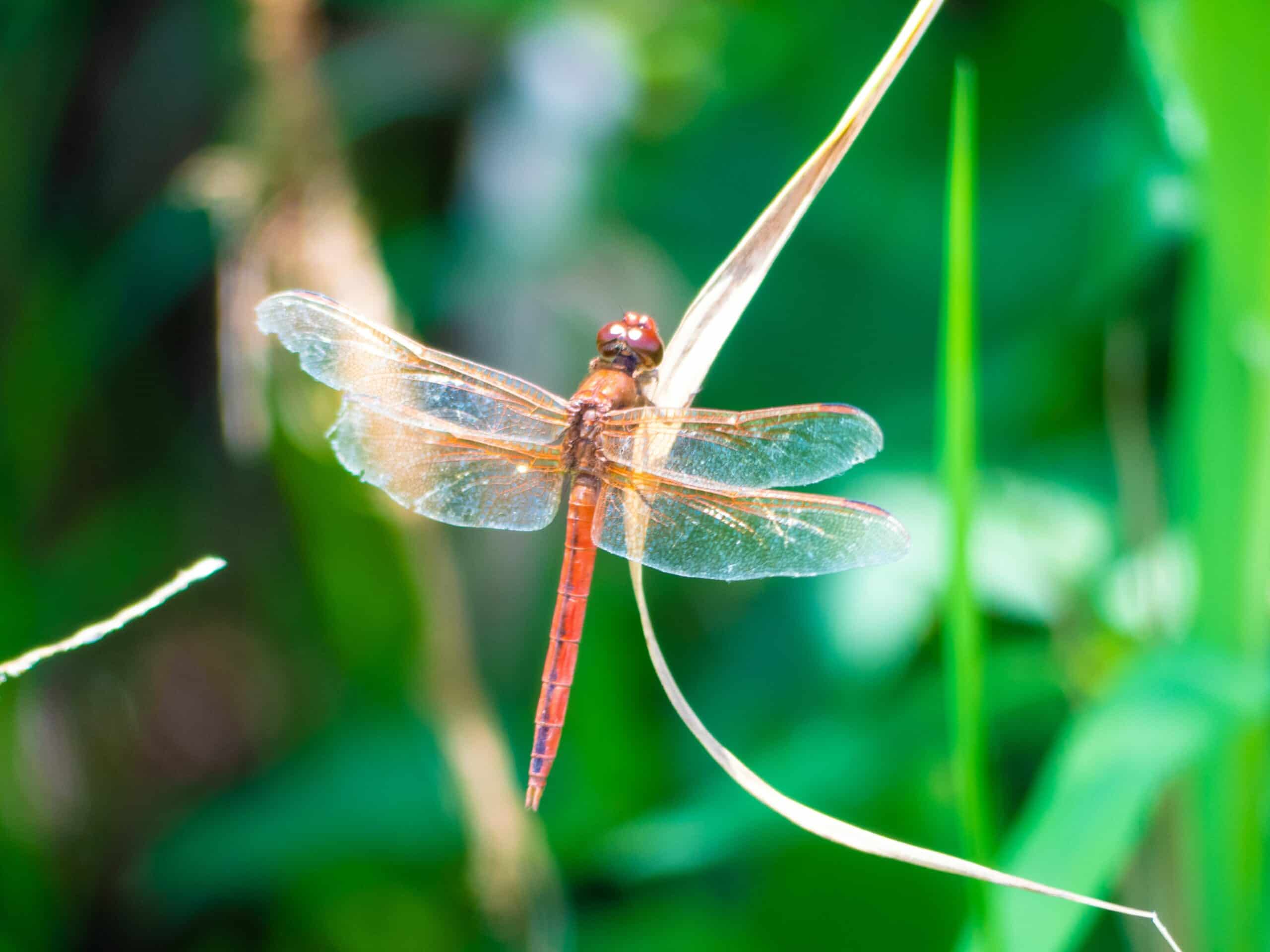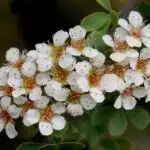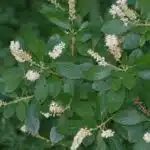Do you have a longing to add some beautiful fragrance and color to your garden? Have you considered growing Daphne shrubs? These gorgeous evergreens not only create an incredible ambiance, but they also require very little care. With their fragrant flowers, glossy leaves, and low maintenance needs, it is no wonder why these shrubs are becoming increasingly popular among gardening enthusiasts.
Let’s explore how to grow and care for these remarkable plants. As the old proverb goes: “A stitch in time saves nine.” That couldn’t be more true when it comes to planting and caring for Daphne shrubs. All the necessary steps must be taken at the right time in order to ensure that your plants thrive. So grab your gardening gloves and come along as we learn all about this special plant!
With just a little bit of knowledge, coupled with a bit of effort on your part, you can transform any outdoor space into a magical place full of beauty and scent. Let us begin our journey towards creating an amazing garden with Daphne shrubs!
What Is A Daphne Shrub?
Daphne shrubs are one of the most popular flowering plants for landscaping. With their fragrant blooms and evergreen foliage, these shrubs make an attractive addition to any garden. They can be grown in a variety of climates, but they need some extra care to reach their full potential. In this article, we’ll look at what exactly a daphne shrub is and how you can choose the right place for it in your garden.
A daphne shrub is known for its sweet-smelling blossoms that bloom in early spring. The flowers come in many colors including white, pink, purple, and yellow. The foliage is evergreen so it will stay green during the cold winter months as well. These plants are easy to maintain and don’t grow too large—they usually only reach about four feet tall when fully mature. Daphne shrubs are also quite drought tolerant once established which makes them ideal for dry climates.
When selecting a spot for your daphne shrub, keep in mind that it needs partial shade and moist soil in order to thrive. It should be planted away from strong winds that could damage the delicate blossoms or dry out the soil too quickly. Planting near trees or buildings can help protect your plant from strong winds while still providing enough sunlight to promote healthy growth. Additionally, make sure to provide plenty of water during dry spells so your plant has what it needs to stay healthy and bloom beautifully each year!
Choosing A Suitable Location For A Daphne Shrub
Once you’ve decided to grow a daphne shrub, it’s essential to choose the right place in your garden. This isn’t a plant that can tolerate any location; rather, it needs specific conditions to thrive. Here’s what to keep in mind when selecting a location for your new shrub.
When deciding where to place your daphne shrub, ensure you select an area with partial shade and protection from strong winds. This is especially important if you live in an area with hot summers as the leaves of the plant can scorch in direct sunlight or dry out due to windy conditions. If you live in a cooler climate, however, full sun is acceptable but only during the morning hours.
It’s also important that your chosen spot has well-drained soil; otherwise, the roots of your shrub are likely to rot due their vulnerability to wetness and humidity. Once you’ve located an ideal position for your daphne shrub, you can move on to making sure the soil is suitable for its growth – which we’ll cover next.
Soil Requirements For Growing Daphne Shrubs
Before planting a daphne shrub, it’s important to consider the soil requirements. Did you know that the daphne shrub is a Mediterranean plant, which means it needs well-drained soil? Here are three key components of soil for successful growth:
- A pH balance between 5.5 and 6.5
- Sunlight of at least six hours a day
- Ample drainage
Achieving optimum soil conditions will help you grow a healthy and vibrant daphne shrub. To do this, make sure the soil has an acidity level between 5.5 and 6.5 on the pH scale. You can test your soil by using a simple pH kit or meter available from gardening stores or online retailers. Additionally, your chosen location should provide enough sunlight; ideally at least six hours per day to allow for proper photosynthesis and water absorption in the roots of the shrub. Lastly, as with all plants, ensure your daphne will have adequate drainage; otherwise it’ll be prone to root rot and other diseases due to sitting in soggy soils for too long!
Now that you understand the importance of giving your daphne shrub well-draining soils with sufficient light and an ideal pH balance, you’re ready to move onto establishing your daphne in its new home!
Planting And Establishing A Daphne Shrub
When it comes to planting and establishing a daphne shrub, there are several important steps you must take. To get the most out of your daphne shrub, let’s start with the basics:
First and foremost, you need to select a spot for planting that is well-drained. Daphne shrubs require soil that is consistently moist but not soggy. The best way to achieve this is by planting in an area that gets good sunlight and has some shelter from harsh winds. Additionally, make sure the soil is loose enough for adequate root growth.
Next, dig a hole twice as wide as the root ball of your daphne shrub and just deep enough so that the top of its root ball will sit slightly above ground level when placed in the hole. Gently remove any excess dirt from around the roots before adding a generous amount of organic matter such as compost or peat moss. This will help keep the soil moist while also providing essential nutrients.
Finally, water your daphne shrub thoroughly after planting to ensure proper hydration and then mulch around it to help retain moisture in the soil and protect its delicate roots from temperature fluctuations. Here are some helpful tips on how to properly care for your new daphne shrub:
• Watering: Make sure to water your daphne shrub regularly during its first growing season until established, but don’t overdo it – too much water can cause root rot or other issues with your plant. • Fertilizing: A balanced fertilizer should be applied once a year in early spring – this will provide essential nutrients for healthy growth throughout the year. These simple steps will help ensure that you get off to a good start with growing and caring for your daphne shrubs! With proper preparation and maintenance, you can enjoy their fragrant blooms for years to come. Now let’s look at what kind of water and fertilizer requirements these plants have so they can thrive at their best potential.
Water And Fertilizer Requirements For Daphne Shrubs
It’s easy to get swept up in the excitement of planting a new daphne shrub, but it is important to remember that once established these plants need regular care and attention. As with any living thing, water and fertilizer are key components for maintaining health and growth – let’s dive into what that looks like for this special shrub.
Like a well-oiled machine, daphne shrubs need the right balance of nutrients to keep them running smoothly. Watering with liquid fertilizer every two weeks will help provide them with much-needed nourishment. The amounts should be kept light though – too much fertilizer can burn the roots and stunt their growth. Just imagine pouring a glass of water over a thirsty plant – that’s the kind of care these shrubs require!
Knowing how much to water your daphne shrub is just as important as when to do it; during hot summers they may even need daily watering depending on how dry the soil has become. If you’re ever in doubt about how much your plant needs, take a look at its leaves – if they look dry or wilted then it’s time for an extra drink!
Pruning And Maintenance Of Daphne Shrubs
Pruning and maintenance of daphne shrubs is an important part of growing these beautiful evergreen plants. To keep them looking their best, it is essential to give your shrub the proper care. Luckily, this task does not require a great deal of effort and can be done with relative ease. Let’s explore how to prune and maintain daphne shrubs for maximum health and beauty!
Trimming your daphne shrub should be done on an annual basis. The best time for trimming is in late winter or early spring before new growth begins. Pruning should focus primarily on dead or damaged branches as well as any overgrown areas that need to be shaped into a more desirable form. Doing so will help promote healthy growth by allowing light and air circulation inside the shrub while also removing any diseased tissue that could potentially spread to other parts of the plant. Additionally, make sure to remove any suckers (small shoots) that are growing from the base of the plant since they can steal valuable energy away from other areas.
It is also important to regularly check for pests or diseases that may have infested your daphne shrub. If left untreated, these issues can cause serious damage to the entire plant and must be dealt with promptly in order to protect its health. Common signs of infestation include discolored leaves; stunted growth; and wilting branches/flowers. If you notice any of these symptoms, immediately contact an expert who can provide you with advice on how best to treat the issue before it becomes too severe.
By following these simple steps, you will ensure that your daphne shrub looks its best throughout all four seasons! With regular pruning and maintenance, this hardy yet elegant foliage will remain vibrant in your garden year-round – providing a charming touch of color wherever it sits! Moving forward, we’ll discuss some common pests and diseases associated with these plants so you can be better prepared when caring for them in the future.
Common Pests And Diseases Of Daphne Shrubs
It is of utmost importance to take proper care of Daphne shrubs if one wishes to enjoy their beauty and fragrance for years to come. As with any plant, pests and diseases can be a problem that can affect the health of these plants. Therefore, it is essential to be aware of the common pests and diseases of Daphne shrubs in order to prevent them from taking hold.
The most common pests associated with Daphne are aphids, which feed on the sap of the plant and leave behind a sticky substance called honeydew. These pests can also be controlled by using pesticides or insecticidal soaps. Additionally, spider mites can also cause damage to the leaves by sucking the sap out of them. If left unchecked, they can cause yellowing and stunted growth. Fortunately, they too can be controlled through pesticide applications or through good ventilation in the area around the plants.
Diseases that may affect Daphne shrubs include root rot and powdery mildew, both of which can cause wilting and discoloration of leaves as well as stunted growth. To avoid these problems, it is important to provide adequate drainage for the roots and keep foliage dry by avoiding overhead watering. Additionally, it is best to select disease-resistant varieties when planting new shrubs in order to reduce the risk of infection from these types of problems down the line.
By being mindful about potential pests and diseases that may affect Daphne shrubs, you can ensure that your plants stay healthy for years to come and provide you with beautiful blooms year after year. In order for this goal to be achieved, one must move onto propagating a daphne shrub – an endeavor that requires knowledge, patience, and commitment but ultimately yields stunning results when done properly.
Propagating A Daphne Shrub
Starting a daphne shrub from cuttings can be intimidating, but it doesn’t have to be. With some patience and care, you can easily propagate your own shrubs. Let’s take a look at how you can do this.
First of all, it’s important to select healthy cuttings that have bare stems with only a few leaves on them. These should come from the current season’s growth and should be about 3 to 6 inches long. Trim off any leaves on the lower half of the cutting so you have a nice clean stem. Then dip the end of the cutting in rooting hormone before planting it in moist potting soil or a mixture of sand and peat moss. Make sure to keep the soil moist by misting it frequently.
You will want to place your cuttings in a warm spot with plenty of indirect light until they begin to root, usually within 2-3 weeks. Once rooted, you can transfer your new shrubs into larger pots or directly into the ground in their permanent location if desired.
TIP: If needed, add an overhead shelter such as cheesecloth or plastic sheeting over your cuttings for extra protection from wind and too much sun exposure while they are rooting. This will help ensure more successful propagation!
Using Daphne Shrubs In The Landscape
It’s often thought that daphne shrubs are difficult to grow, but in reality, with the right care and soil conditions, they can be quite beautiful additions to any garden. However, it is true that incorporating them into a landscape design can be challenging. In this section, we’ll explore how to use daphne shrubs in the landscape for maximum beauty and impact.
When considering where to plant a daphne shrub, it’s important to consider its mature size. These plants tend to stay small but will become leggy and sparse with too little sun exposure or overcrowding. It’s best to position them in an area of partial shade or filtered sunlight—they don’t need full-sun exposure all day long. Additionally, they should be planted at least three feet away from other shrubs so they have enough room to grow.
Finally, when planting a daphne shrub in the landscape, make sure the soil is well-draining and amend it with compost if necessary. This will help ensure proper water absorption and help keep its roots healthy. With the right placement and soil conditions, your daphne shrub will thrive for years to come!
Planting Daphne Shrubs In Containers
Planting daphne shrubs in containers can be a great way to bring color, texture, and fragrance to your outdoor space. Container planting allows you to customize the soil type and drainage needs for the shrub, and also makes it easy to move them around as needed. It’s a great option for those short on garden space or who want more control over their landscape.
When planning a container garden for daphne shrubs, make sure the pot is large enough. These plants can grow pretty big if given the right conditions – 12-15 inches tall and wide is common – so make sure there’s enough room for roots to spread out. The potting mix should be light with good drainage, so adding some perlite or vermiculite will help. It’s important to water regularly, but don’t let the plant stay soggy as this can lead to root rot.
Fertilizing is optional; many daphnes do well without additional nutrients in the soil. If you choose to fertilize, use an organic fertilizer at half strength every month during active growth periods (spring through summer). Your container garden should thrive with these simple tips!
Now that you know how to plant daphne shrubs in containers, let’s look at companion planting for these beautiful blooms!
Companion Planting For Daphne Shrubs
Now that you’ve learned how to plant daphne shrubs in containers, let’s look at companion planting. This type of planting involves placing different types of plants together to create a well-rounded landscape. Companion plants can help protect your daphnes from pests and diseases, encourage pollinators, provide shade when needed, and add color to the garden. It’s important to choose companion plants that are compatible with the daphne shrubs’ growing conditions and needs.
When pairing companion plants with your daphne shrubs, consider the light requirement, soil type, moisture levels, and growth rate. You should also avoid invasive or aggressive plants that may take over the garden. Some species that work well as companions for daphne shrubs include ferns, lavender, and yarrow. These plants will add texture and color while supporting the health of your daphenes in many ways.
In addition to providing a beautiful display in your garden, companion planting also helps create a more natural habitat for beneficial insects like bees and butterflies. This makes it easier for pollinators to find food sources which encourages more flowers on your daphne shrubs! Now that you know how to pair companion plants with your daphenes, it’s time to learn about winter care for these delightful evergreen shrubs!
Winter Care For Daphne Shrubs
Maintaining your daphne shrub throughout the winter can be tricky. For example, if you’re in a colder climate and temperatures dip below freezing, you’ll need to take extra precautions. But with some planning and care, your daphne shrubs can survive the coldest months of the year.
The first step in winter care for daphne shrubs is to provide proper insulation. Mulching around the base of the plant helps keep moisture in and retain warmth from the sun during the day. You should also wrap the pot with bubble wrap or a blanket to protect it from extreme temperature swings. Additionally, you should move your potted daphne into an area that stays relatively warm during cold spells, such as a garage or shed.
Lastly, it’s important to keep your daphne shrub well-watered during winter months. This will help prevent root damage caused by freezing temperatures and will ensure that it gets enough nutrition throughout the season. If possible, aim to water regularly every few weeks instead of waiting until there are signs of wilting or drooping leaves. With these steps in place, your daphne shrub should be able to make it through winter without any major issues!
Now that you know how to properly care for your daphne shrubs over winter, let’s take a look at some of the different varieties available so that you can choose one that fits your needs best!
Daphne Shrub Varieties
Ah, the age-old question: how do you pick the right daphne shrub? The answer is simple: by perusing the seemingly endless varieties of these lovely plants! With so many types to choose from, it’s no wonder folks are overwhelmed. But fear not – I’m here to break down the differences between each shrub and help you select the perfect one for your garden.
Let’s start with size: daphne shrubs come in all shapes and sizes – there are dwarf varieties, tall ones, and even tiny ones that fit into small spaces. If you’re looking for a showstopper in your yard, try a larger variety like ‘Summer Ice’ or ‘Carol Mackie’. On the other hand, if you want something delicate and compact, go for a dwarf type like ‘Aureomarginata’ or ‘Eternal Fragrance’.
But size isn’t the only factor at play here. Color is also important when selecting a daphne shrub. These plants come in shades of white, pink, and red – some even have variegated leaves! You can find dark-green-and-yellow specimens as well as silvery gray ones. So whatever hue you prefer, there’s sure to be an option out there for you.
No matter which type of daphne shrub you decide on, rest assured it will bring beauty and fragrance to your garden. Now let’s take a look at the best uses for these lovely plants…
Best Uses For Daphne Shrubs
Daphne shrubs have some unique characteristics that make them great additions to any garden. With a stunning array of fragrant and colorful blooms, they can bring a variety of beauty and fragrance to your landscape. But aside from their visual appeal, there are many other uses for daphne shrubs that you may not have considered.
One great way to use daphne shrubs is as an attractive border or hedge. They can provide a beautiful backdrop for flowering plants and add texture to your garden. If you’re looking to create a privacy screen in your yard, daphne shrubs are an excellent choice. They will grow tall enough to provide reliable coverage, while still allowing the sun’s light through for other plants in your garden.
You can also use daphne shrubs as part of a low-maintenance landscape design. The tall growth provides shade for other plants and helps reduce the amount of watering needed for them – so you’ll save time and resources in caring for your garden! Daphne shrubs also attract beneficial insects like bees and butterflies, making them ideal companion plants for vegetables or flowers in your yard.
In addition to the practical benefits they offer, daphne shrubs are simply beautiful and enjoyable to look at – making them an ideal choice if you’re looking to spruce up your outdoor space with something special! Whether it’s providing an interesting border or acting as a natural source of shade, these gorgeous shrubs can be used in multiple ways around the home.
Troubleshooting Daphne Shrub Problems
When it comes to troubleshooting daphne shrub problems, the most common issue is winter damage. Winter can cause a variety of problems for these beautiful plants, including dieback and discoloration of leaves. Fortunately, there are some steps you can take to protect your daphne shrub from cold weather and keep it healthy.
First, make sure you’re providing adequate protection from the elements. Mulching around the base of the plant will help insulate its roots and prevent water loss during colder months. Additionally, you may want to wrap any newly planted shrubs in burlap or plastic for extra insulation during the winter months.
Finally, pruning your daphne shrubs regularly can help keep them healthy and vigorous. Cut away any dead or diseased branches in late summer or early fall to encourage new growth come springtime. Additionally, trimming off faded flowers can also help promote new blooms throughout the growing season. With a few simple steps, you’ll be able to keep your daphne shrubs looking their best year-round!
Frequently Asked Questions
How Long Does It Typically Take For A Daphne Shrub To Become Established?
Establishing a daphne shrub can be a rewarding and enjoyable experience for gardeners. With proper care and attention, these plants can quickly become an eye-catching part of your outdoor space. But how long does it typically take for a daphne shrub to become established?
The answer depends on several factors, including the size of the plant at purchase, the type of soil in which it’s planted, and the climate in which it’s growing. Generally speaking, however, most daphne shrubs will be fully established within two to three years. During this period, the shrub should be watered regularly and pruned as needed to promote healthy growth and blooming. To help ensure success, consider adding an organic mulch around the base of the plant to retain moisture and protect its roots from extreme temperatures.
With some patience and dedication, you’ll have a beautiful daphne shrub that you can enjoy for many years to come! Providing adequate water, sunlight exposure, and regular fertilizer will help keep your plant healthy and blooming with vibrant colors year after year. So why not give it a try? With just a little effort on your part, you could have an attractive addition to your landscape in no time at all!
How Cold Tolerant Are Daphne Shrubs?
Irony often brings to mind a cynical or negative view, but it can also be used to emphasize a point in a positive light. In the case of daphne shrubs, its cold tolerance is no laughing matter. Whether you live in a climate with mild winters or frigid temperatures, these shrubs are resilient enough for any garden.
Daphne shrubs are relatively hardy and can tolerate temperatures as low as -10°F (-23°C). While they don’t require heavy pruning, if your area experiences extreme cold weather you can wrap them in burlap for extra protection. It’s important to note that during periods of extreme cold, the leaves of daphne shrubs will die back. However, their roots remain alive and new growth will sprout once the weather warms up again.
These evergreen shrubs also make a great addition to your yard due to their beautiful flowers and fragrant aroma. During winter months when other plants have gone dormant, daphne shrubs provide an oasis of life and beauty in your garden. With proper care and knowledge of their cold tolerance, you’ll be able to enjoy these lovely plants year-round!
What Is The Recommended Spacing Between Multiple Daphne Shrubs?
Daphne shrubs are delightful additions to any garden. Their fragrant blooms and vibrant foliage brighten up any outdoor space. However, if you’re looking to create a stunning daphne display with multiple shrubs, it’s important to consider the recommended spacing between plants.
When planting multiple daphne shrubs, it’s essential to know the right amount of space that each bush needs to thrive and look its best. Generally speaking, you should give each plant about three feet of space in all directions for adequate air circulation, light exposure, and root growth. If you have large varieties, such as Daphne odora ‘Aureomarginata’ or Daphne x burkwoodii ‘Carol Mackie’, opt for an even greater distance between plants — around five feet — for maximum impact.
When deciding upon the placement of your daphne shrubs, bear in mind that these beauties tend to spread outward more than upward when mature. Therefore, it’s best to give them room to grow so they can reach their full potential without crowding other plants in your garden. With careful consideration of their positioning and adequate spacing between each one, you’ll be rewarded with a lush landscape that will bring years of beauty and delight!
Are Daphne Shrubs Deer Resistant?
When it comes to gardens, deer can often be a nuisance. Luckily for those of us who have daphne shrubs in our gardens, we can rest assured that deer won’t be munching on them anytime soon. That’s because daphne shrubs are known for being deer resistant.
But what does ‘deer resistant’ mean? To put it simply, it means that deer don’t care for the taste or texture of the plant enough to make it worthwhile eating. While this doesn’t guarantee that your daphne shrub will stay untouched by deer, it does make it much less likely that they’ll be interested in chowing down on them.
Perhaps the best way to ensure that your daphne shrubs stay off the menu is to use garden fencing or repellents like garlic or predator urine to discourage would-be diners from making a meal out of your plants. Taking these preventative measures can help you keep your garden looking its best and free from pesky pests!
Is It Possible To Grow A Daphne Shrub Indoors?
It’s not often that you hear of someone growing a shrub inside their home, but is it possible to grow a daphne shrub indoors? When it comes to indoor plant care, there are a few things to consider. To begin with, daphne shrubs need lots of light and humidity to thrive. They also require well-drained soil that has been amended with organic matter. If you can provide the right conditions for your daphne shrub, it will have an increased chance of surviving and thriving inside your home.
However, the most important factor when it comes to caring for daphnes indoors is making sure they get enough sunlight. These plants need at least 6 hours of direct sunlight every day or else they won’t bloom as expected. Additionally, you’ll need to water them regularly and provide plenty of humidity for optimal growth. You may even want to invest in a humidifier if your home doesn’t naturally produce enough moisture for the plant.
Caring for daphne shrubs indoors may seem daunting at first but with the right environment and regular maintenance, they can be grown successfully in any home! The key is understanding their needs and providing them with the necessary care they require so they can live happily and bloom beautifully all year round.
Conclusion
The Daphne shrub is a beautiful and fragrant addition to any yard. It is hardy and has a low maintenance, making it perfect for novice gardeners or busy households. Once established, Daphne can be enjoyed for many years with minimal care. Although deer resistant, these shrubs still require proper spacing and protection from extreme temperatures if planted outdoors. One should also be aware that growing Daphne indoors requires specific conditions and may not always be successful.
In conclusion, the Daphne shrub can make a great addition to any home garden, providing sweet scents and beautiful evergreen foliage. With patience and the right knowledge of how to properly care for the shrub, you will have a “fragrant” reminder of nature’s beauty in your own backyard. As they say, “Good things come to those who wait!” So don’t rush it; take your time when caring for your new Daphne shrub to ensure its long-term success!





























